United States Capitol Building
Washington DC Building Photos Thumbnails Buildings Home
|
United States Capitol Building, View from top of Newseum The United States Capitol, often called the Capitol Building, is the home of the United States Congress, and the seat of the legislative branch of the U.S. federal government. It is located on Capitol Hill at the eastern end of the National Mall in Washington, D.C. Though no longer at the geographic center of the Federal District, the Capitol forms the origin point for the District's street-numbering system and the District's four quadrants. The original building was completed in 1800 and was subsequently expanded, particularly with the addition of the massive dome, and expanded chambers for the bicameral legislature, the House of Representatives in the south wing and the Senate in the north wing. Like the principal buildings of the executive and judicial branches, the Capitol is built in a distinctive neoclassical style and has a white exterior. Both its east and west elevations are formally referred to as fronts, though only the east front was intended for the reception of visitors and dignitaries. Photo 100, Nov 2016 |

|
|
United States Capitol Building, View from top of Newseum Photo 104, Nov 2016 |

|
|
United States Capitol Building Photo 70, Nov 2011 |
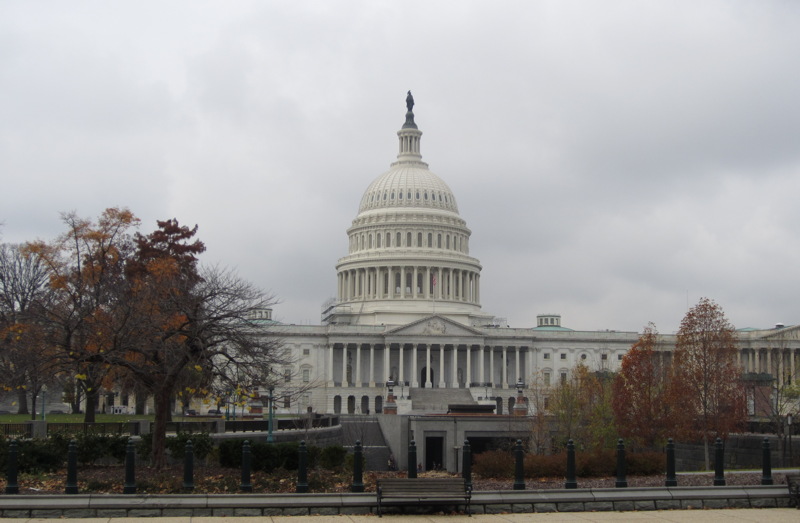
|
|
United States Capitol Building Photo 100, Nov 2011 |
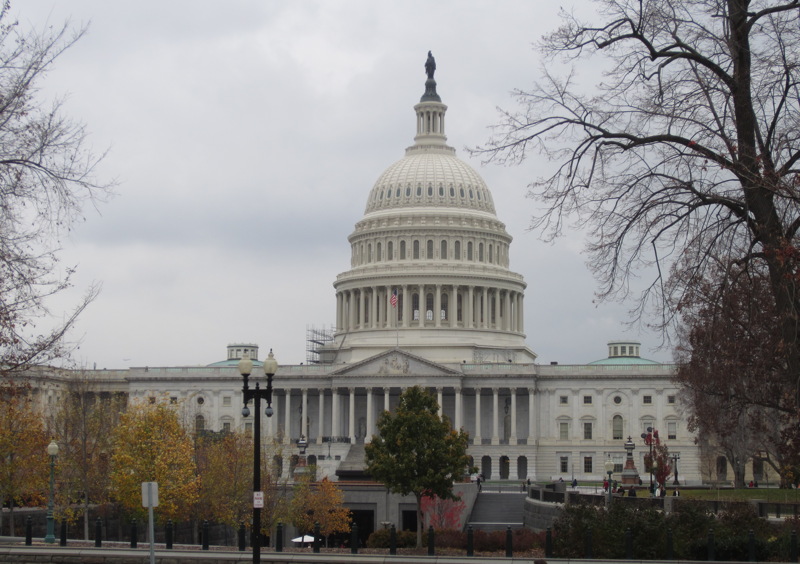
|
|
United States Capitol Building Photo 101, Nov 2011 |
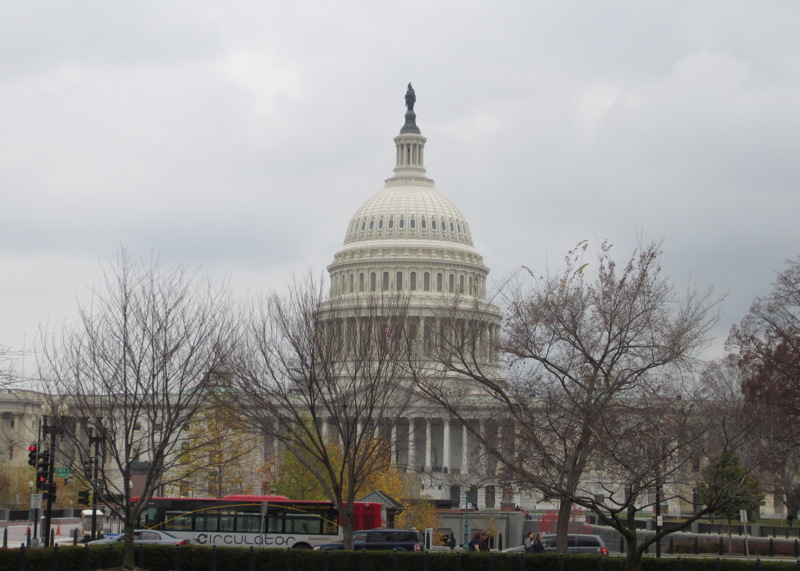
|
|
United States Capitol Building Photo 64, Nov 2011 |
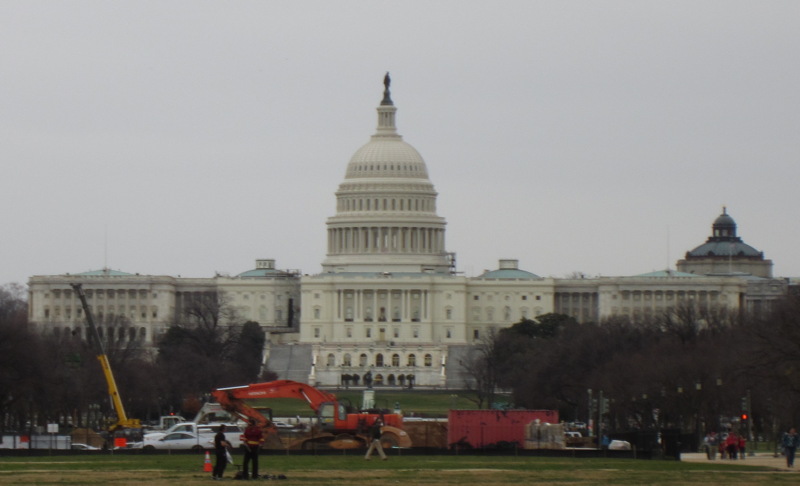
|
|
United States Capitol Building down PA Ave. Photo 109a, Nov 2011 |
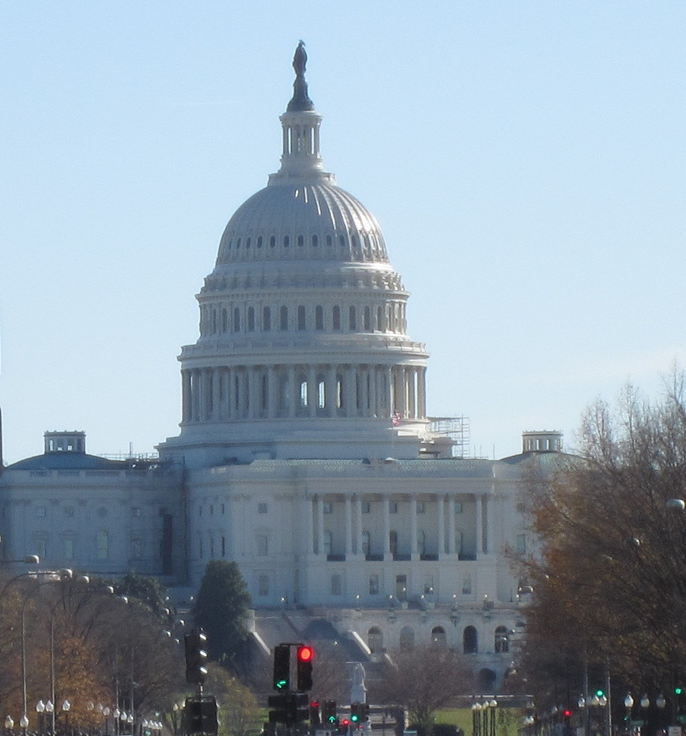
|
|
United States Capitol Building Capitol and reflecting pool Photo 157, Nov 2011 |
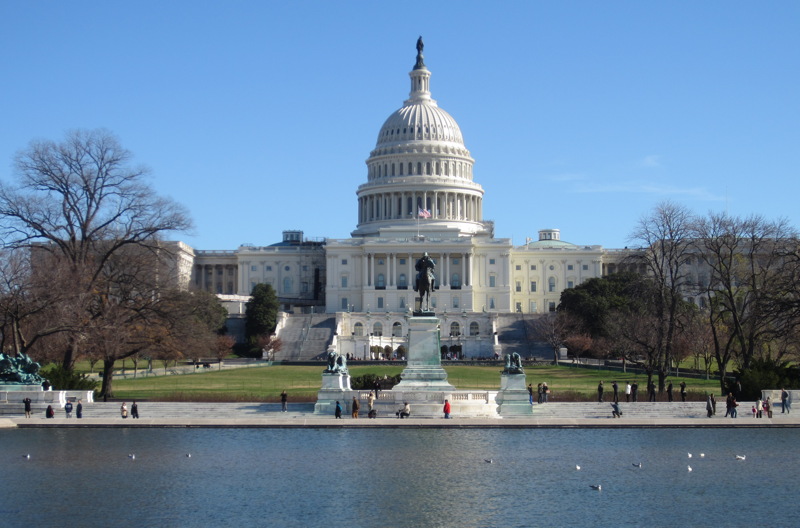
|
|
United States Capitol Building Photo 175, Nov 2011 |
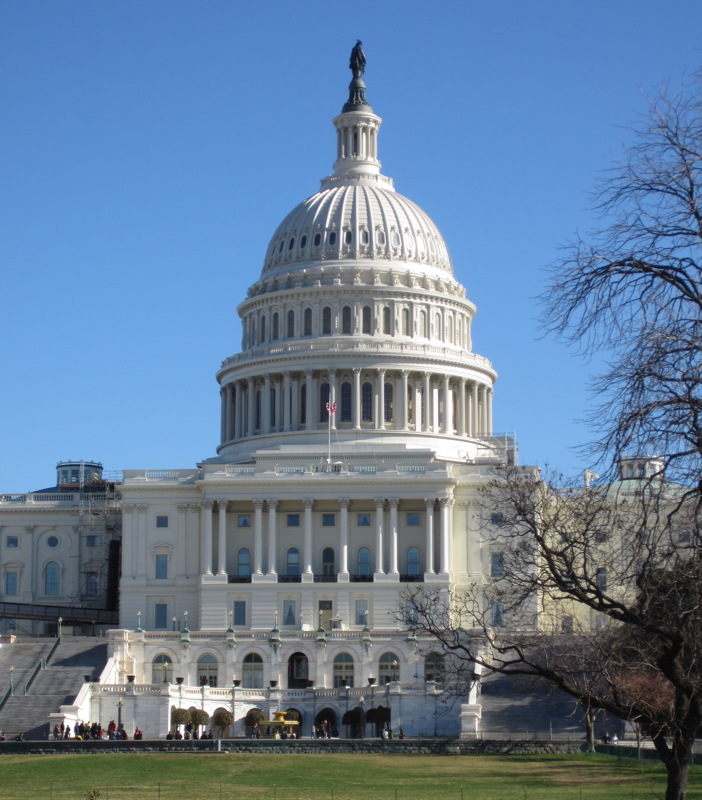
|
|
United States Capitol Building Photo 180, Nov 2011 |
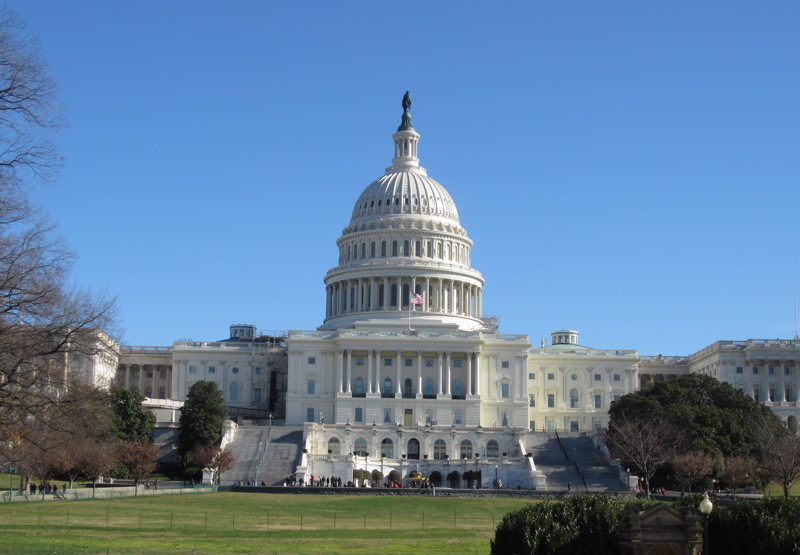
|
|
United States Capitol Building Photo 185a, Nov 2011 |
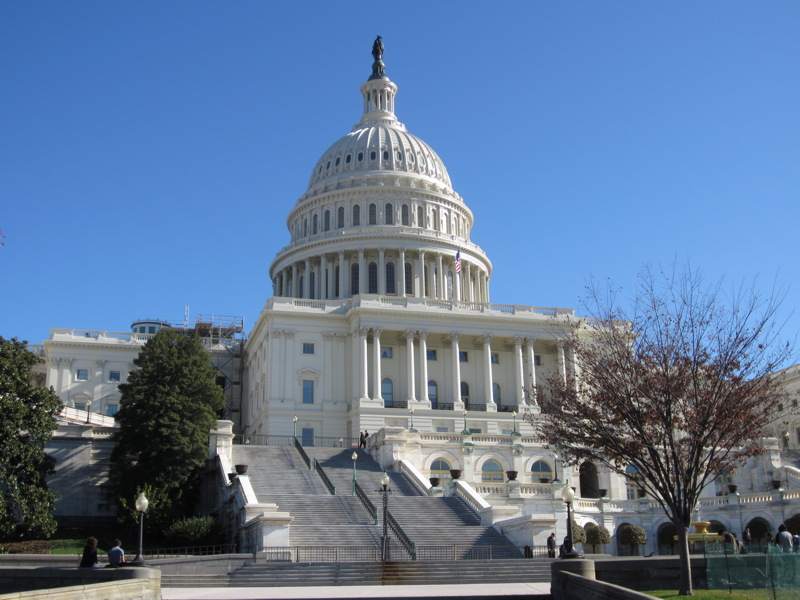
|
|
United States Capitol Building Photo 186a, Nov 2011 |
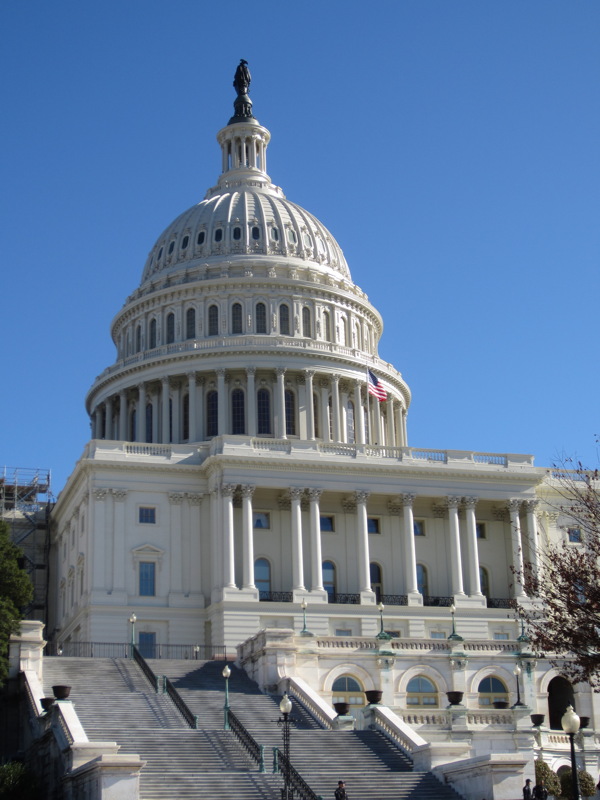
|
|
United States Capitol Building down the Mall Photo 187a, Nov 2011 |

|
|
United States Capitol Building Photo 108b, Nov 2008 |
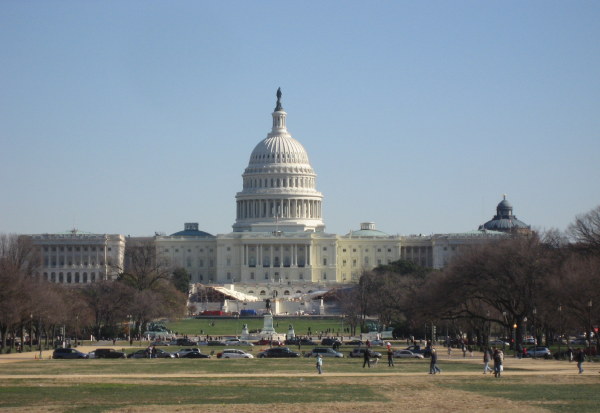
|
|
United States Capitol Building Photo 103b, Nov 2008 |
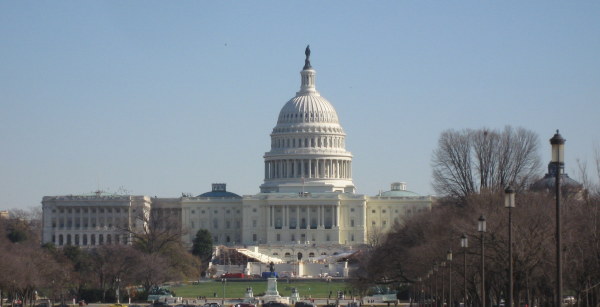
|
U.S. Capitol Visitor Center, Rotunda, National Statuary Hall
Nov 2011|
Capitol Visitor Center James Paul Clarke statue, a United States Senator and the 18th Governor of Arkansas. Photo 112 |
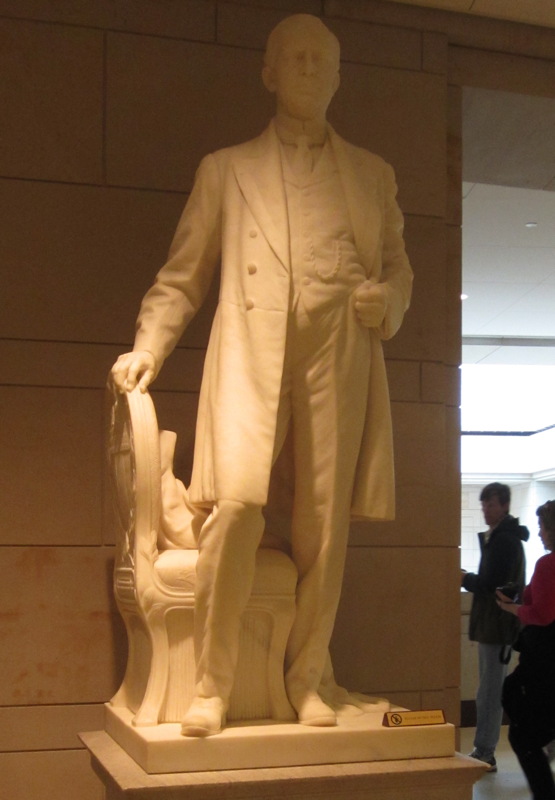
|
|
Capitol Visitor Center Senator Ernest Gruening of Alaska Photo 113 |
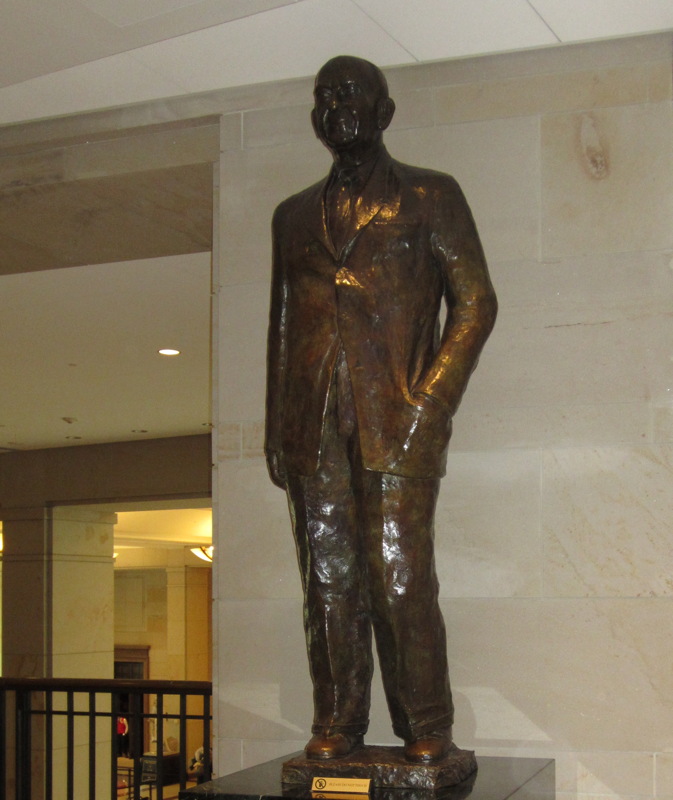
|
|
Capitol Visitor Center Replica of sculpture that is on top of Capitol dome. Photo 116 |
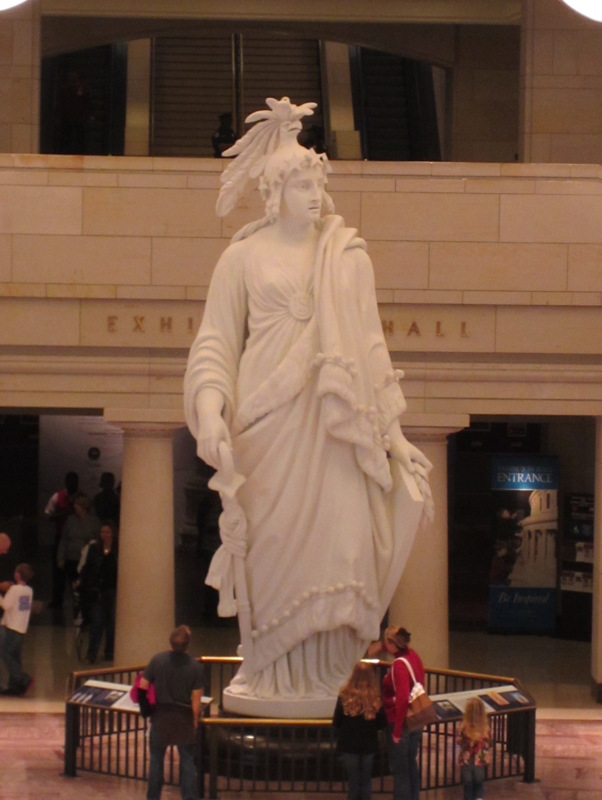
|
|
Capitol Visitor Center Statue of Edward Douglass White, Sr. (1795-1847), Governor of Louisiana and U.S. Representative
Photo 117 |
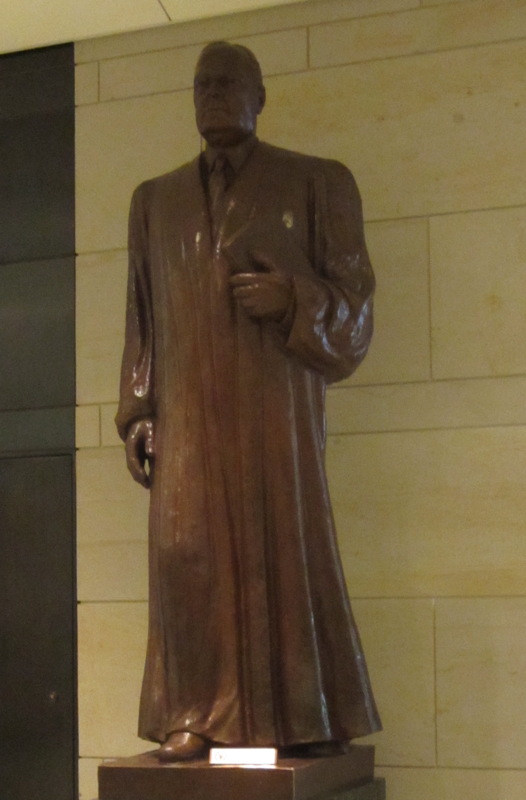
|
|
Capitol Visitor Center Statue of Julius Sterling Morton (April 22, 1832 – April 27, 1902) was a Nebraska editor who served as President Grover Cleveland's Secretary of Agriculture. He was a prominent Bourbon Democrat, taking the conservative position on political, economic and social issues, and opposing agrarianism. In 1897 he started a weekly magazine entitled The Conservative.
Photo 120 |
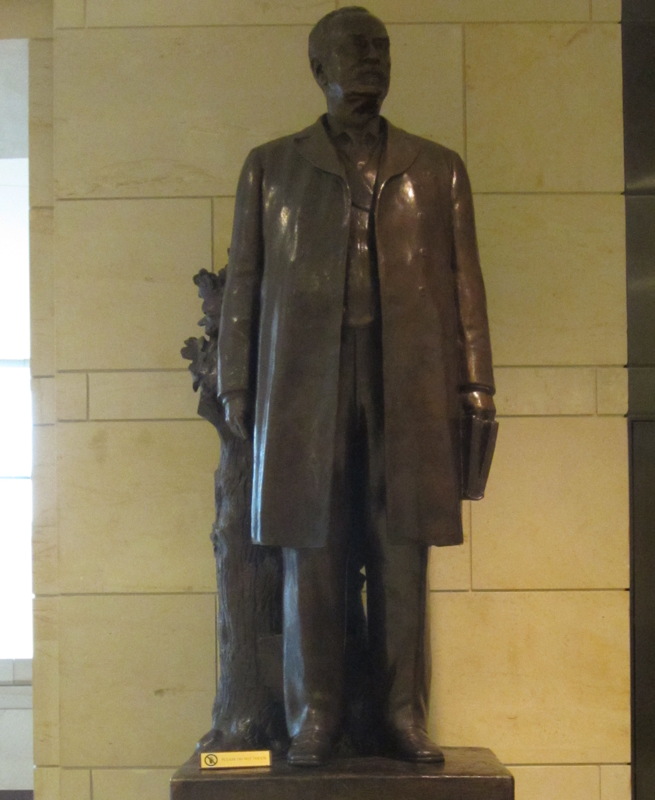
|
|
Capitol Visitor Center Statue of Crawford W. Long Photo 182 |
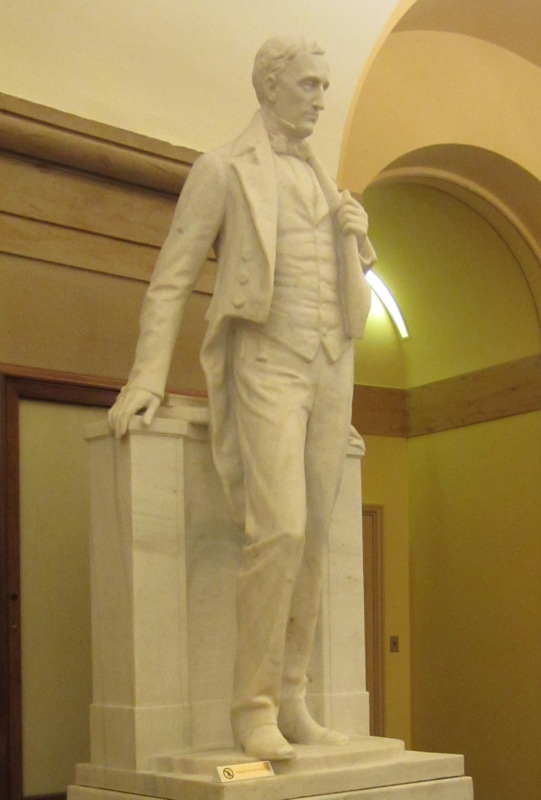
|
|
Capitol Visitor Center Statue of Joseph Ward (SD) Photo 184 |
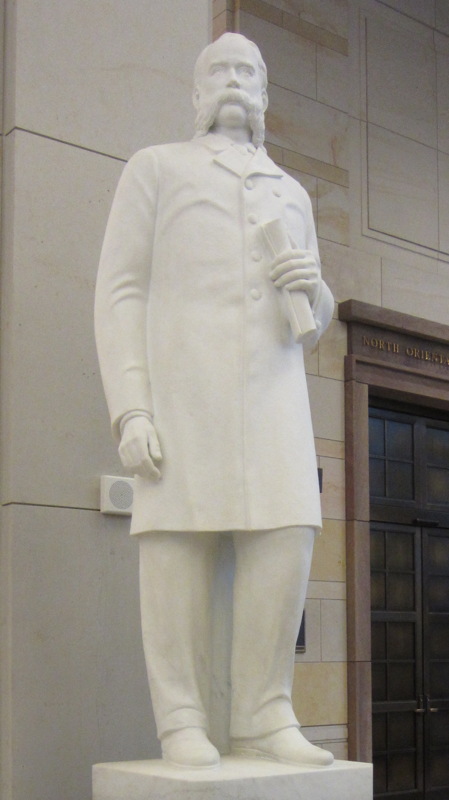
|
|
Capitol Visitor Center Statue of Maria L Sanford Photo 185 |
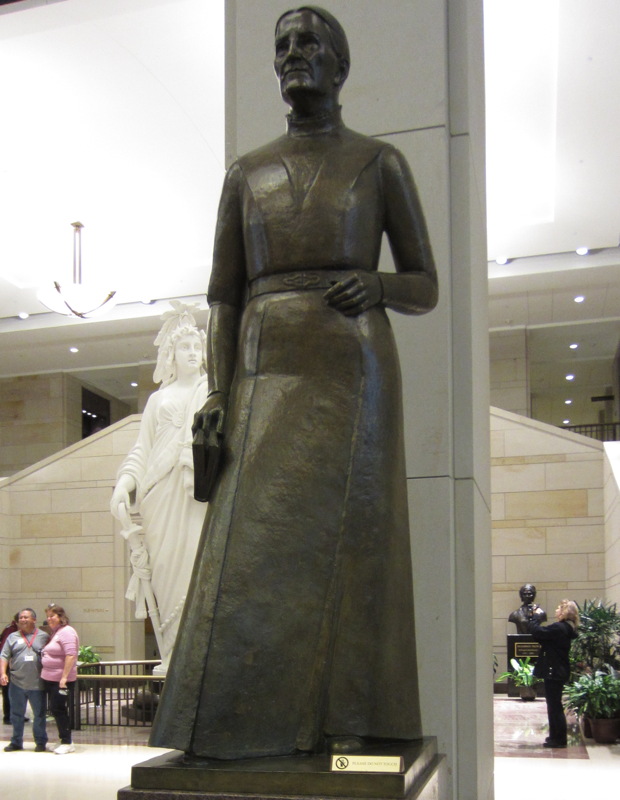
|
|
Capitol Visitor Center Statue of Jeanette Rankin Photo 186 |

|
|
Capitol Visitor Center Statue of Po' Pay (NM) Photo 187 |
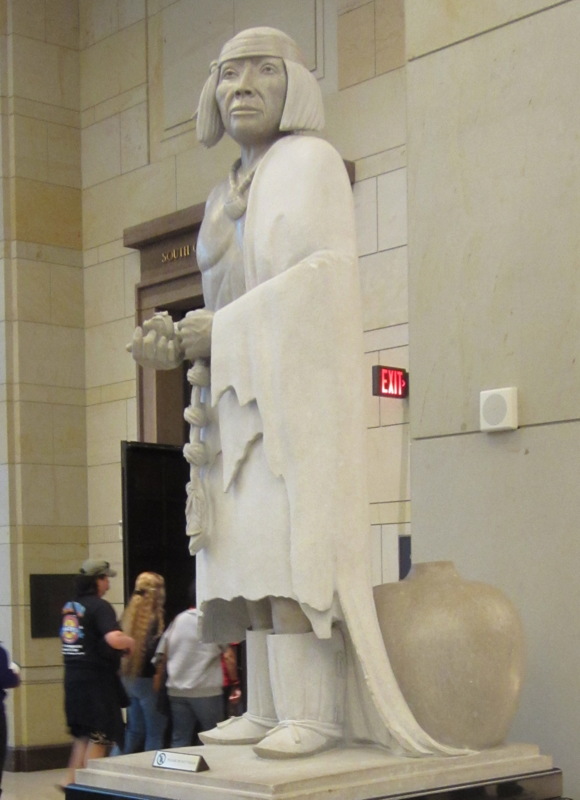
|
|
Capitol Visitor Center Replica of sculpture that is on top of Capitol dome. Photo 189 |
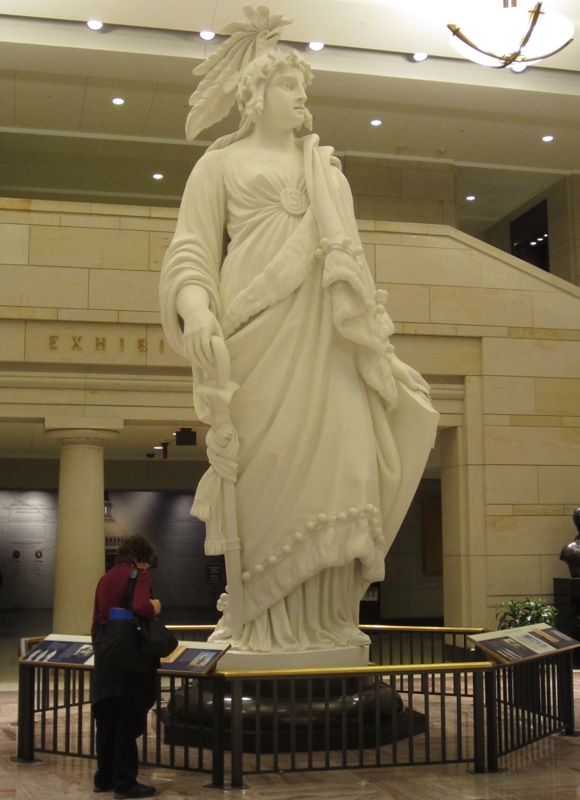
|
|
Capitol Visitor Center Statue of Helen Keller Photo 190 |
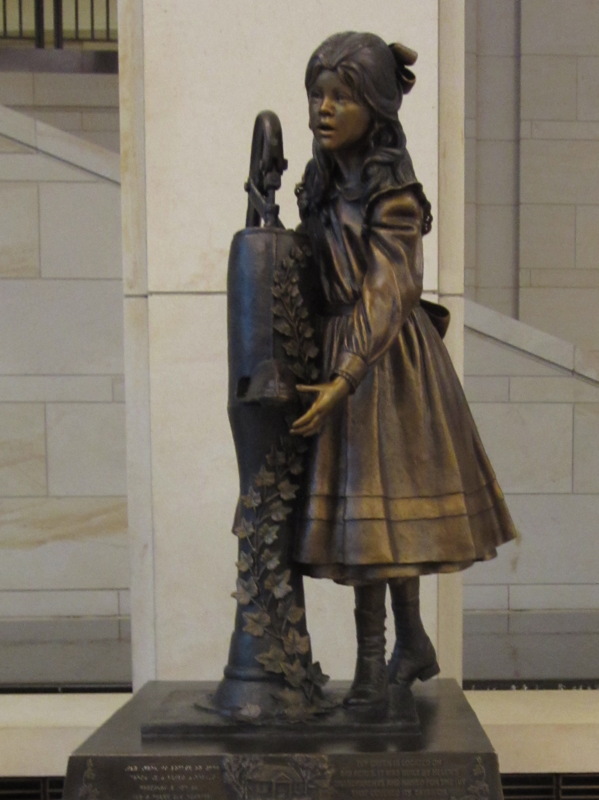
|
|
Capitol Visitor Center Statue of Sakakawea (ND) Photo 191 |

|
|
Capitol Visitor Center Statue of Kamehameha I Kamehameha I also known as Kamehameha the Great, conquered the Hawaiian Islands and formally established the Kingdom of Hawaiʻi in 1810. By developing alliances with the major Pacific colonial powers, Kamehameha preserved Hawaiʻi's independence under his rule. Kamehameha is remembered for the Kanawai Mamalahoe, the "Law of the Splintered Paddle", which protects human rights of non-combatants in times of battle. Kamehameha's full Hawaiian name is Kalani Paiʻea Wohi o Kaleikini Kealiʻikui Kamehameha o ʻIolani i Kaiwikapu kaui Ka Liholiho Kūnuiākea. Several Kamehameha Statues honor the monarch who founded the Kingdom of Hawaii. This is in the visitor's center of the Capitol. Photo 192 |
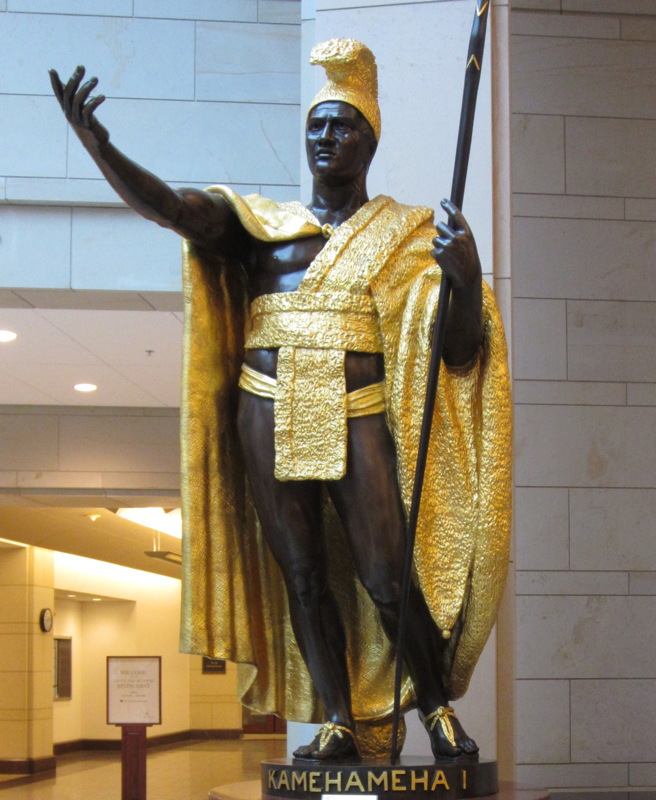
|
|
Capitol Visitor Center Sister Joseph (RI) Photo 193 |
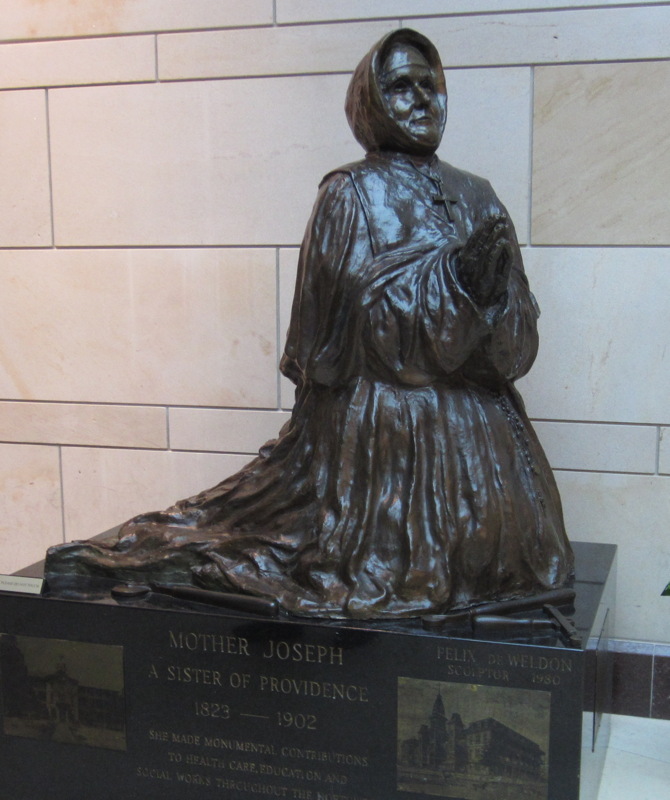
|
|
National Statuary Hall National Statuary Hall is a chamber in the United States Capitol devoted to sculptures of prominent Americans. The hall, also known as the Old Hall of the House, is a large, two-story, semicircular room with a second story gallery along the curved perimeter. It is located immediately south of the Rotunda. The meeting place of the U.S. House of Representatives for nearly 50 years (1807-1857), it is now the main exhibition space for the National Statuary Hall Collection. Photo 129 |
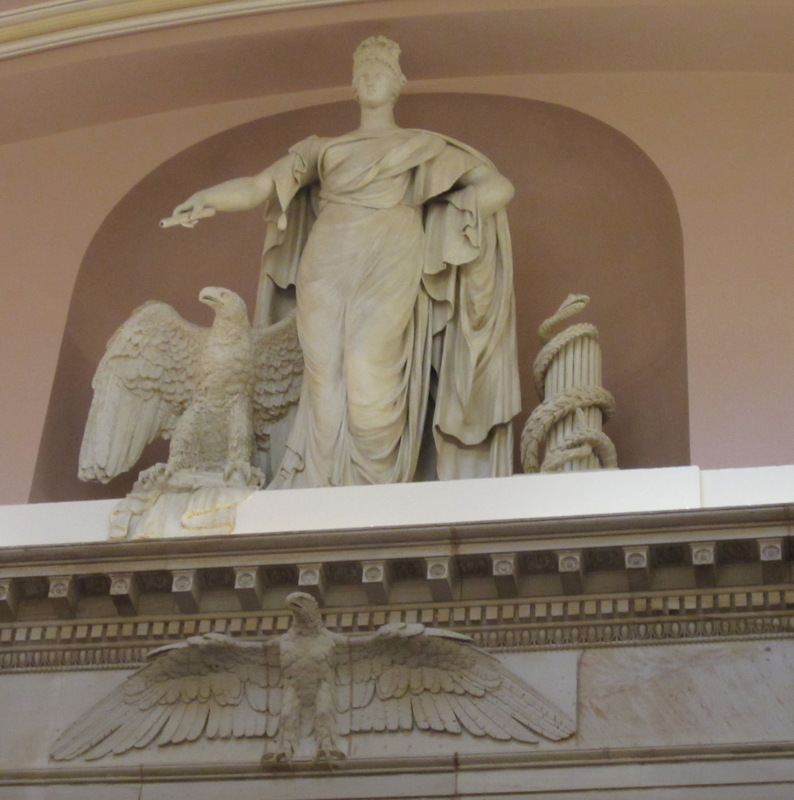
|
|
The double-sunk coffered ceiling in National Statuary Hall
Photo 124 |
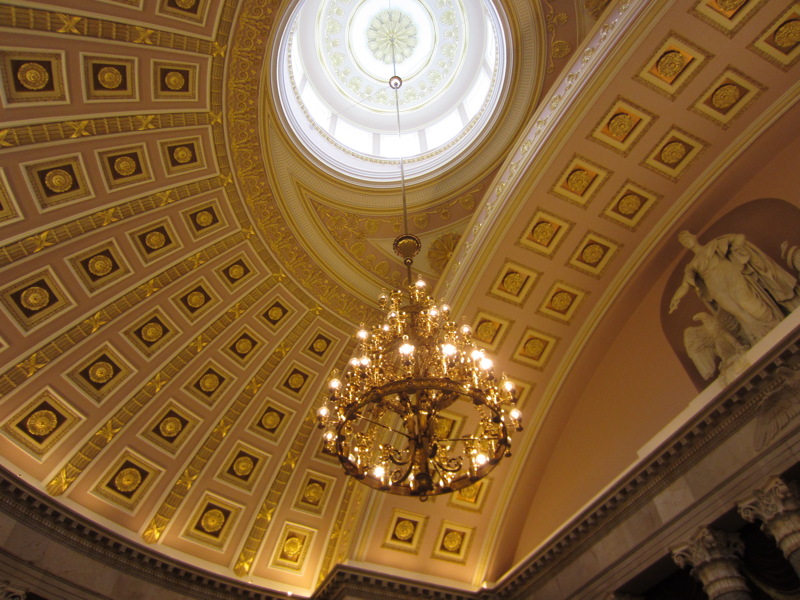
|
|
National Statuary Hall
Photo 130 |

|
|
National Statuary Hall
Photo 125 |

|
|
National Statuary Hall From the left, Lewis Cass, Zebulon Baird Vance, John M. Clayton, Marcus Whitman Photo 126 |

|
|
National Statuary Hall From the left,John Burke (ND), William Allen (OH), John Sevier (TN), John James Ingalls (KS) Photo 131 |

|
|
National Statuary Hall From left, Lewis Cass (MI), ?? Photo 133 |
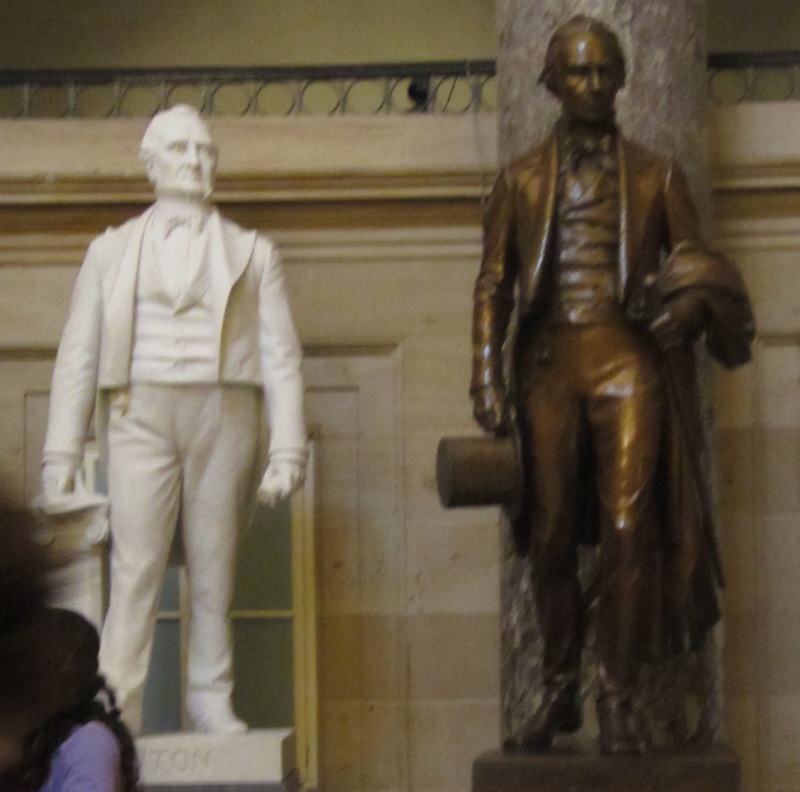
|
|
National Statuary Hall Ethan Allen (VT) Photo 134 |
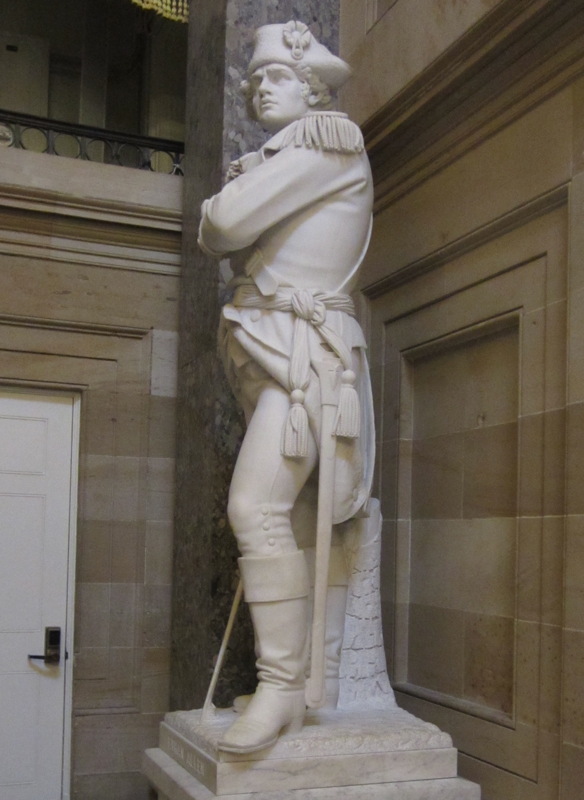
|
|
National Statuary Hall ON lieft, Hannibal Hamlin (ME) and Daniel Webster (NH) Photo 136 |
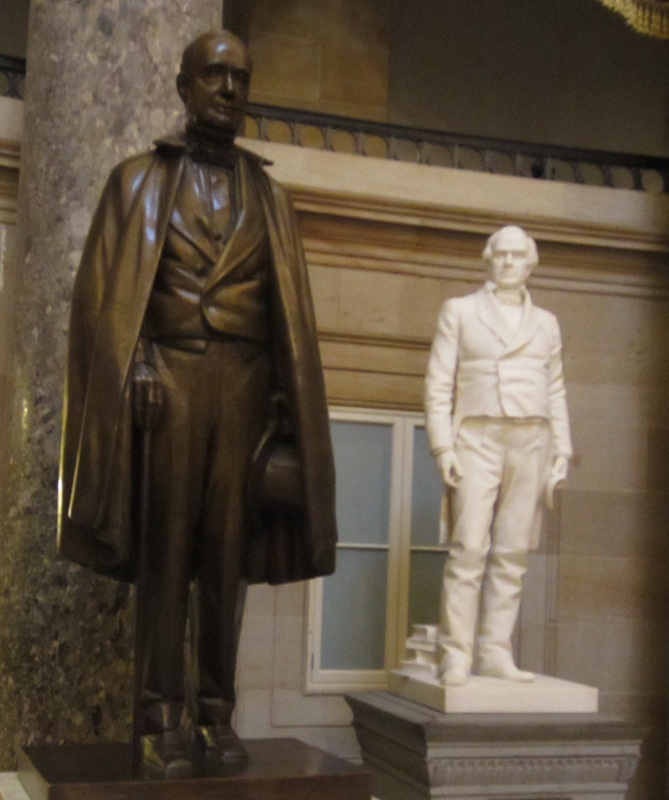
|
|
Rotunda Dome The United States Capitol rotunda is the central rotunda of the United States Capitol in Washington, D.C.. Located below the Capitol dome, it is the tallest part of the Capitol and has been described as its "symbolic and physical heart." The rotunda is surrounded by corridors connecting the House of Representatives and Senate sides of the Capitol. To the south of the rotunda is the semi-circular National Statuary Hall, which until 1857 was the House of Representatives chamber. The northeast of the Rotunda is the Old Senate Chamber, used by the Senate until 1859. The Rotunda is 96 feet in diameter and rises 180 feet 3 inches to the canopy, and is visited by thousands of people each day. It is also used for ceremonial events authorized by concurrent resolution, including the lying in state of honored people. Photo 137 |
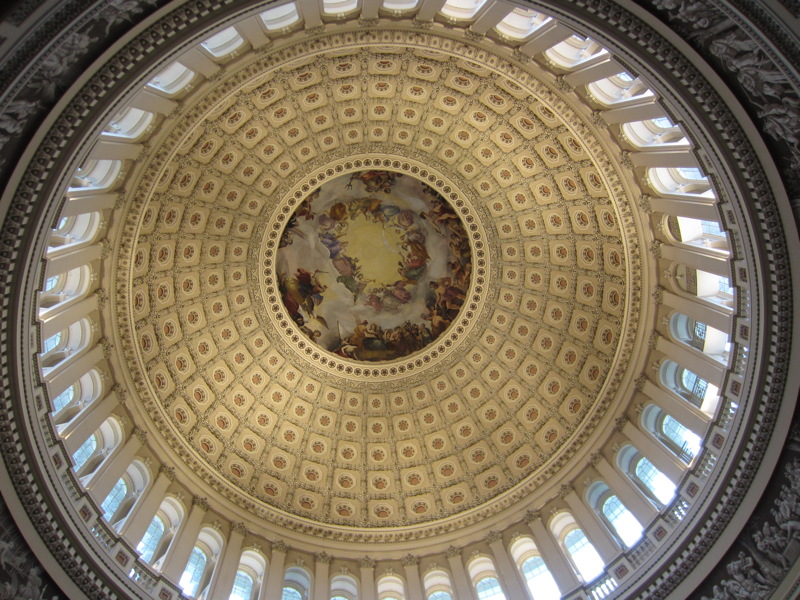
|
|
Rotunda Dome detail The doctor and architect William Thornton was the winner of the contest to design the Capitol in 1793. Thornton had first conceived the idea of a central rotunda. However, due to lack of funds or resources, oft-interrupted construction, and the British attack on Washington during the War of 1812, work on the rotunda did not begin until 1818. The rotunda was completed in 1824 under Architect of the Capitol Charles Bulfinch, as part of a series of new buildings and projects in preparation for the final visit of Marquis de Lafayette in 1824. The rotunda was designed in the neoclassical style and was intended to evoke the design of the Pantheon. Photo 139 |
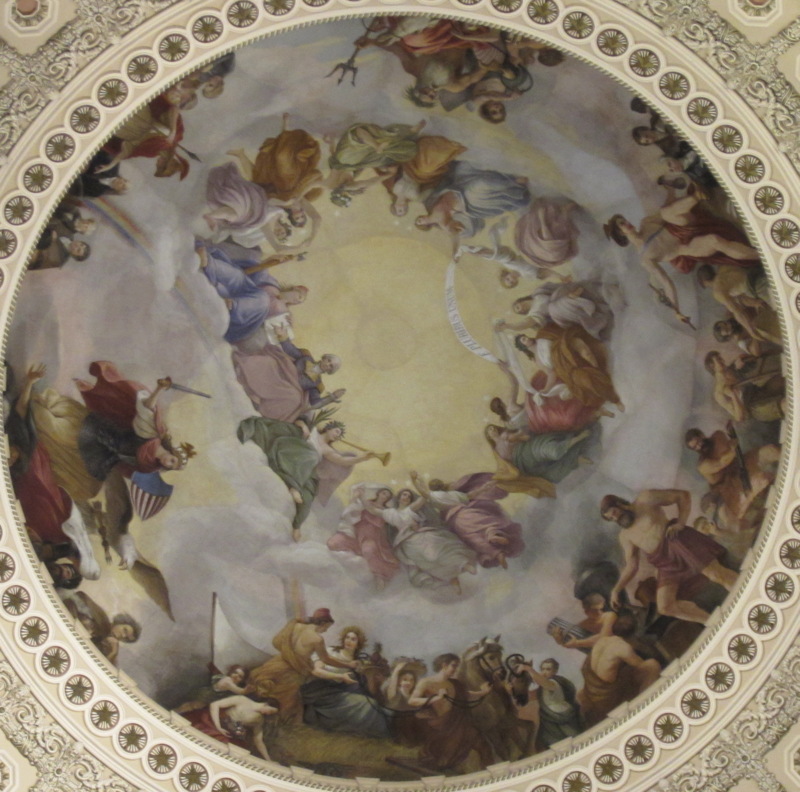
|
|
Rotunda Dome
Photo 140a |
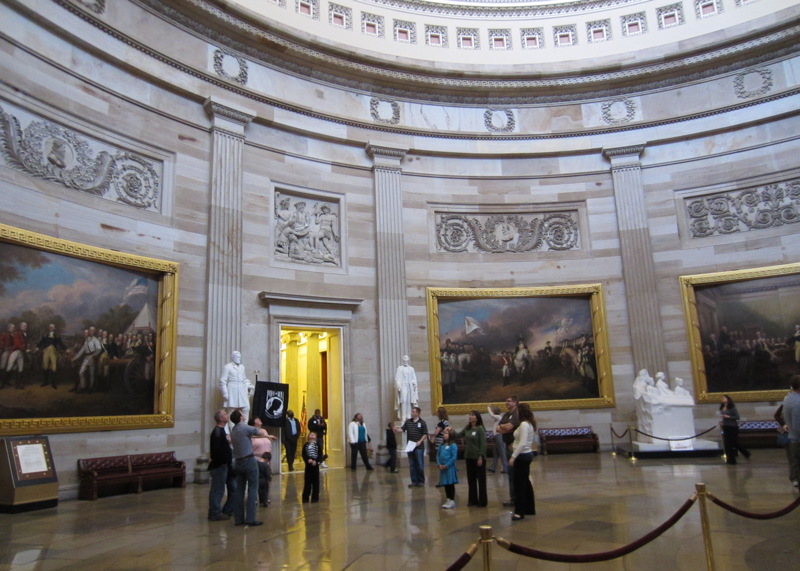
|
|
Rotunda Dome Statues of Jefferson and Washington Photo 141a |
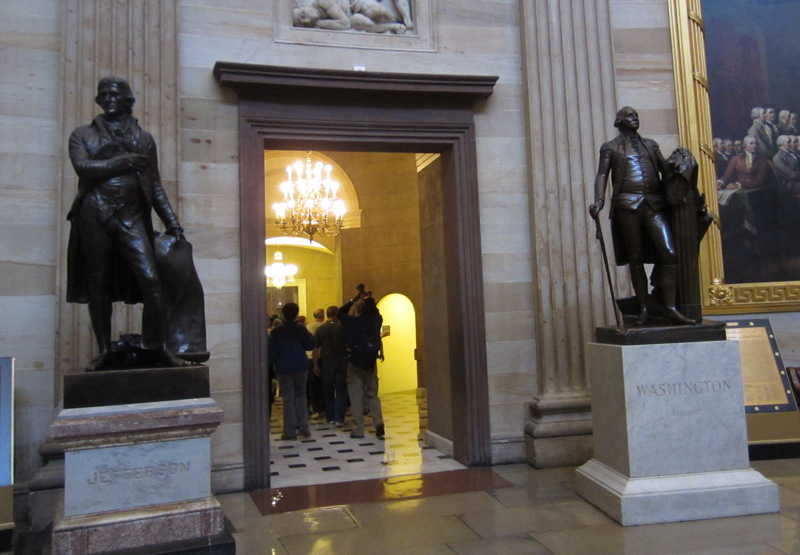
|
|
Rotunda Dome
Photo 142 |
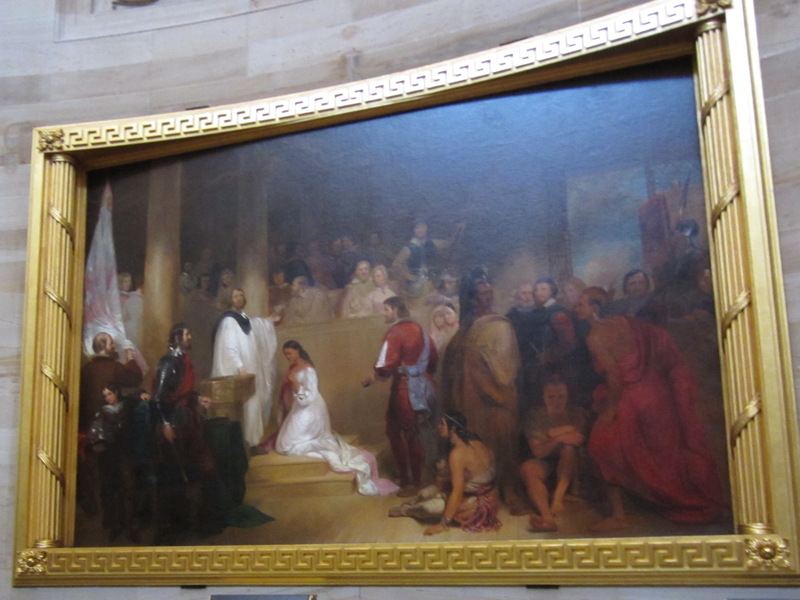
|
|
Rotunda Dome
Photo 143 |
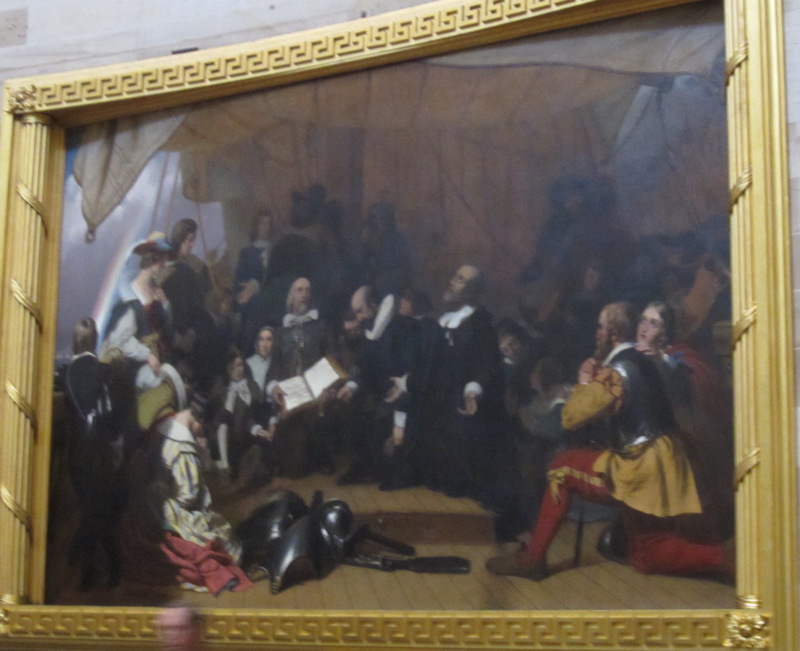
|
|
Rotunda Dome Statue of Martin Luther King Photo 144 |
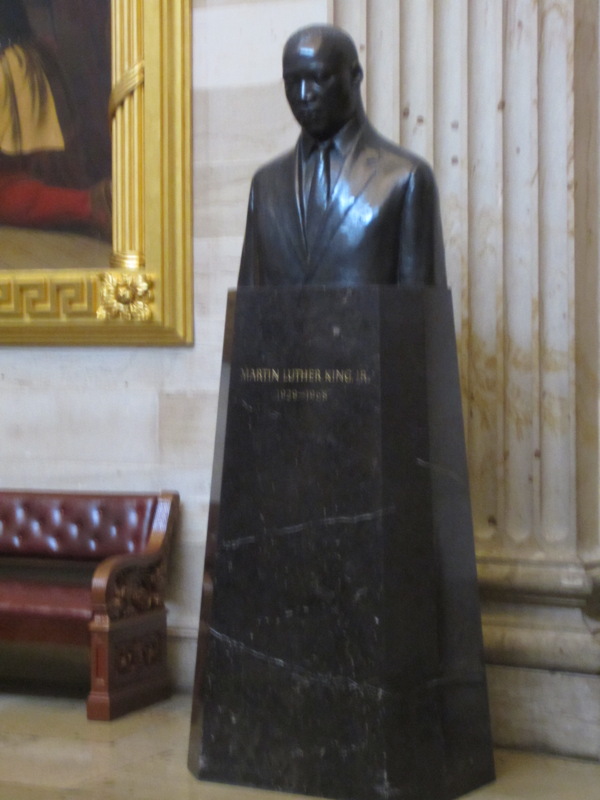
|
|
Rotunda Dome Frieze detail Photo 148 |
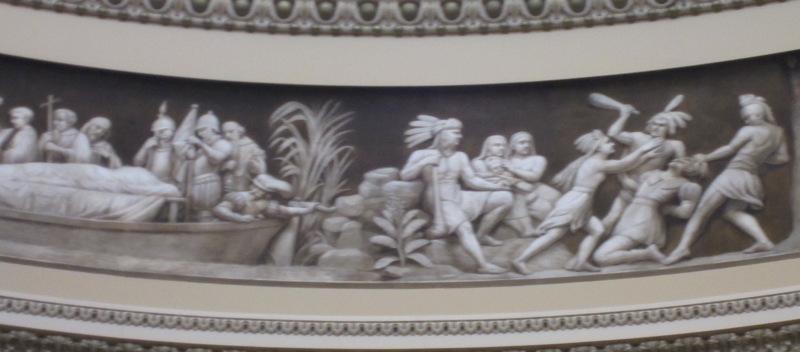
|
|
Rotunda Statue of Eisenhower Photo 160 |
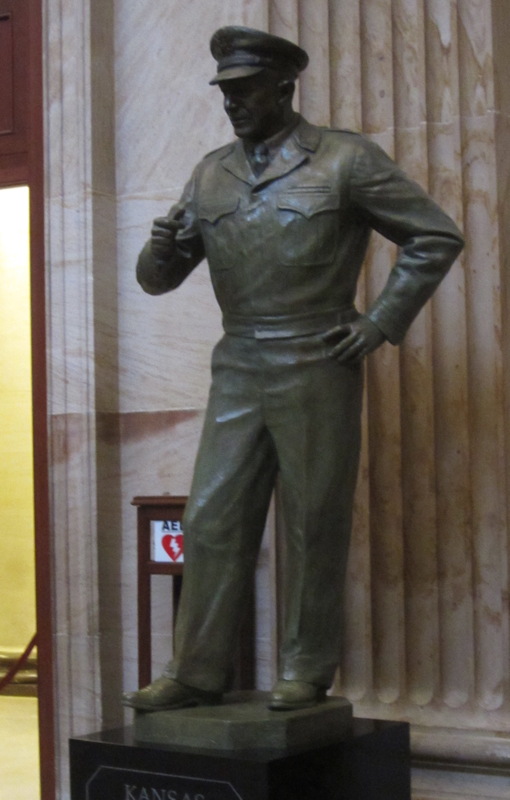
|
|
Rotunda Statue of Ronald Reagan Photo 161 |
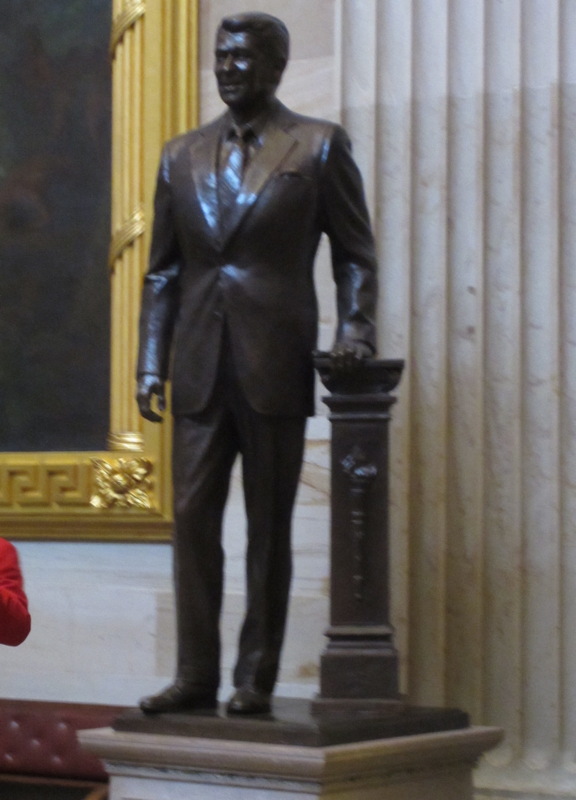
|
|
Rotunda Statue of Jefferson Photo 163 |
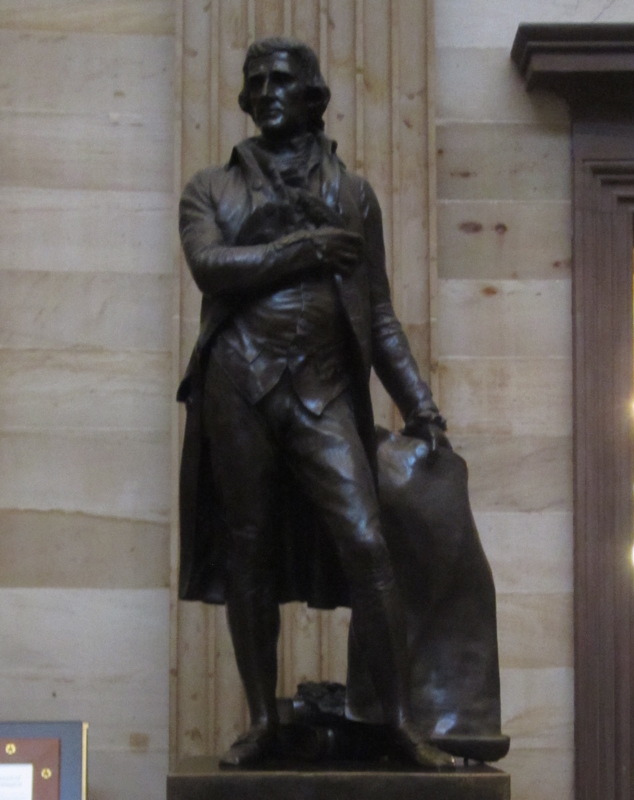
|
|
Rotunda Statue of Washington Photo 165 |

|
|
P>Rotunda
Statue of Alexander Hamilton Photo 166 |
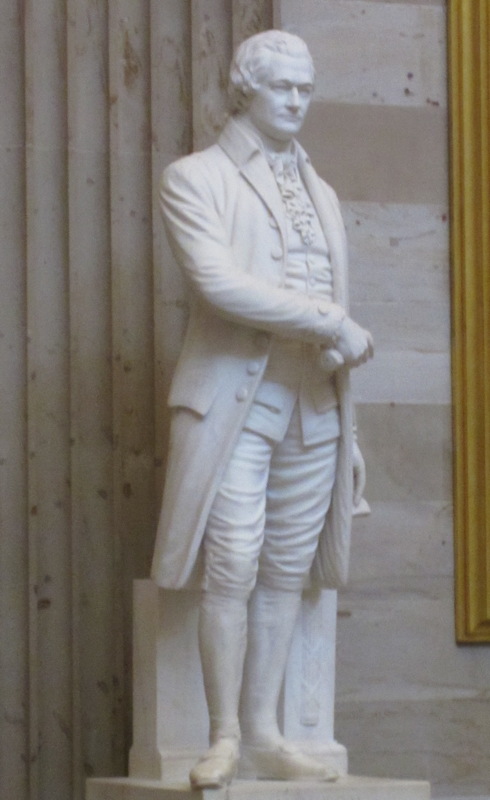
|
|
P>Rotunda
Statue of Lincoln Photo 169 |
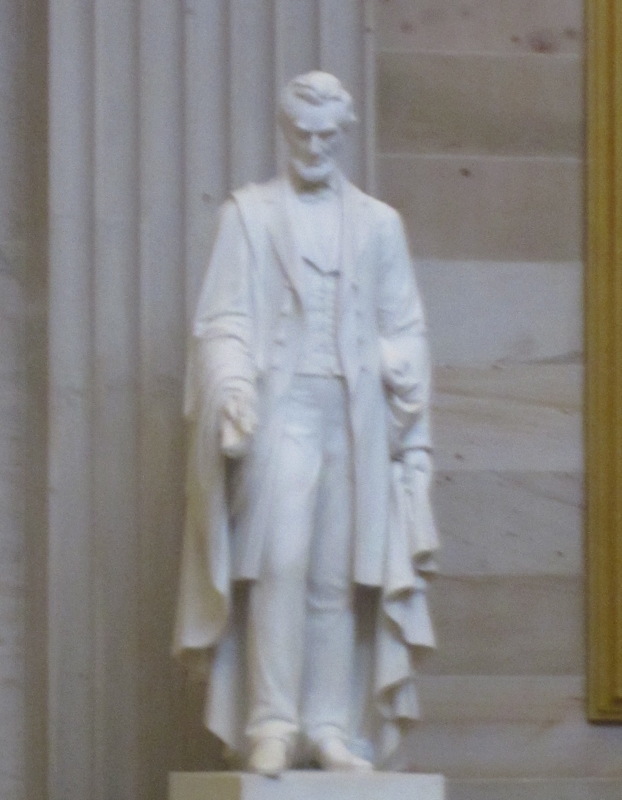
|
|
Rotunda Women's Suffrage Movement Statue This group portrait monument is known formally as the Portrait Monument to Lucretia Mott, Elizabeth Cady Stanton, and Susan B. Anthony, pioneers of the women's suffrage movement in the United States. Photo 179 |
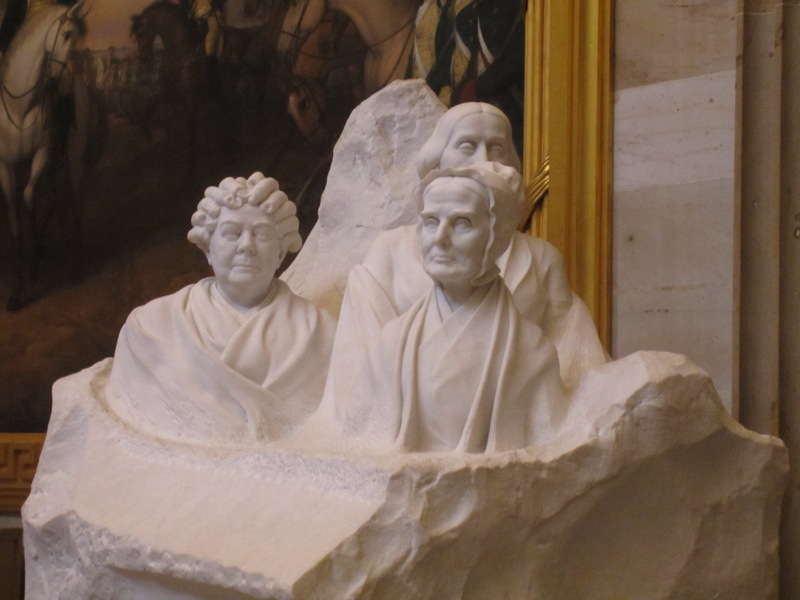
|